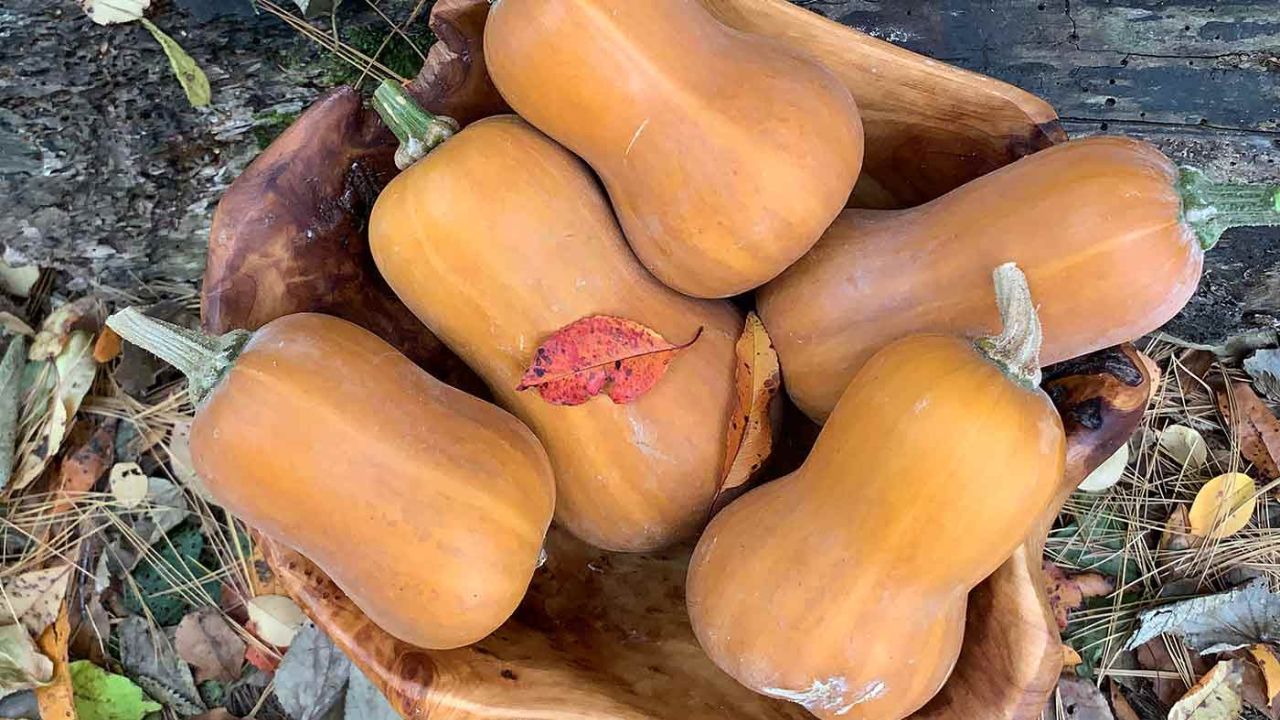Honeynut squash, a smaller, sweeter cousin of butternut squash, has gained popularity for its rich flavor and versatility in the kitchen. This guide will walk you through everything you need to know to successfully plant, care for, and harvest your own honeynut squash.
What is a Honeynut Squash? Is It the Same as Butternut Squash?
Honeynut squash is a hybrid variety developed from butternut squash. It has a sweeter taste, creamy texture, and smaller size, typically weighing around 1 to 2 pounds. While both belong to the same Cucurbita family, honeynut squash has a more intense flavor, making it a favorite for soups, roasting, and purees.
How to Plant / Sow
- Timing: Sow seeds indoors 3-4 weeks before the last frost date or directly outdoors after the danger of frost has passed.
- Soil Preparation: Choose a well-drained, nutrient-rich soil with a pH of 6.0 to 6.8.
- Sowing Seeds: Plant seeds 1 inch deep, spacing them about 2-3 feet apart in rows or hills. If starting indoors, transplant seedlings once they have 2-3 true leaves.
How to Care for the Plants
- Watering: Keep the soil consistently moist, especially during flowering and fruit development.
- Fertilizing: Use a balanced fertilizer or compost at planting and again when fruits start to develop.
- Mulching: Apply mulch to retain moisture and suppress weeds.
How Do Fruits Form?
Fruits form after the flowers are pollinated, typically by bees. The female flowers, identifiable by their swollen bases, develop into the squash once pollination occurs. It takes about 80-100 days from planting to fruit maturity.
Can Honeynuts Grow in a Container or Grow Bag?
Yes! Honeynut squash can be grown in large containers or grow bags (at least 5 gallons in size). Ensure they have good drainage and provide a trellis for support, as these plants can become quite sprawling.
When Can You Harvest?
Harvest honeynut squash when the skin turns a deep, golden-orange color and the stem starts to dry out. This usually occurs 90-100 days after planting. A firm tap should produce a hollow sound, indicating ripeness.
Can You Save the Seeds from a Honeynut Squash?
Yes, you can save seeds from honeynut squash, but be aware that they may not produce true-to-type plants due to cross-pollination with other squash varieties. To save seeds, select the healthiest fruits, scoop out the seeds, wash them, and dry them thoroughly before storage.
How Long Does Honeynut Squash Store?
When stored in a cool, dry place, honeynut squash can last up to 3-6 months. The thicker skin provides excellent protection against spoilage.
Other Fun Facts:
- Who Created the Honeynut Squash?: The honeynut squash was developed by chef and horticulturist Charles W. McClure and is a result of a collaboration with the University of Vermont.
- Can You Eat the Skin of a Honeynut Squash?: Yes! The skin is edible and becomes tender when cooked. However, some prefer to peel it for certain dishes.
FAQs:
Can I grow honeynut squash in cooler climates?
Yes, but ensure you provide warmth, such as using row covers or starting seeds indoors.
What pests should I watch for?
Common pests include squash bugs and cucumber beetles. Regular inspections and organic pest control methods can help manage these.
How do I tell when the squash is ripe?
Look for a hard skin and a change in color to deep orange, along with a dried stem.
Conclusion
Growing honeynut squash can be a rewarding endeavor, yielding delicious, nutritious fruits that enhance a variety of dishes. With proper planting, care, and harvesting techniques, you can enjoy this delightful squash right from your garden. Happy gardening!





